Do's and Don'ts
BACnet Wiring (Part 1 of 3)
This article is the first of a series of three articles on BACnet Wiring. This series will cover the basic do's and don'ts with detailed
explanations and useful tips.
About MS/TP Protocol
The BACnet Master Slave Token Passing (MS/TP) protocol is used to relay and exchange information between building devices. The MS/TP is based on the BACnet
standard protocol SSPC-135, Clause 9. The BACnet MS/TP is a peer-to-peer, multiple master protocol based on token passing. A token is an information packet in the
form of a pulse signal that is passed between devices on a network
EIA-485
The BACnet MS/TP protocol uses EIA-485 (RS-485) standard as the physical layer for data transmission. Neptronic Controllers also use the BACnet MS/TP protocol
over RS-485 for communicating with third party routers, gateways, or master controllers.
Wiring
Communication wiring must be installed in a proper daisy chain format. Daisy chain configuration means that there is only one main cable and every network device is
connected directly along its path in parallel. It is important to keep the same color for all A+ wiring and another color for all B- wiring. Do not use a free
topology and/or star configuration on the network. This will cause reflection issues.

Illustration 1 - MS/TP Network Configuration Example
Here is an illustration of the correct MS/TP network wiring:
Click here to enlarge the image
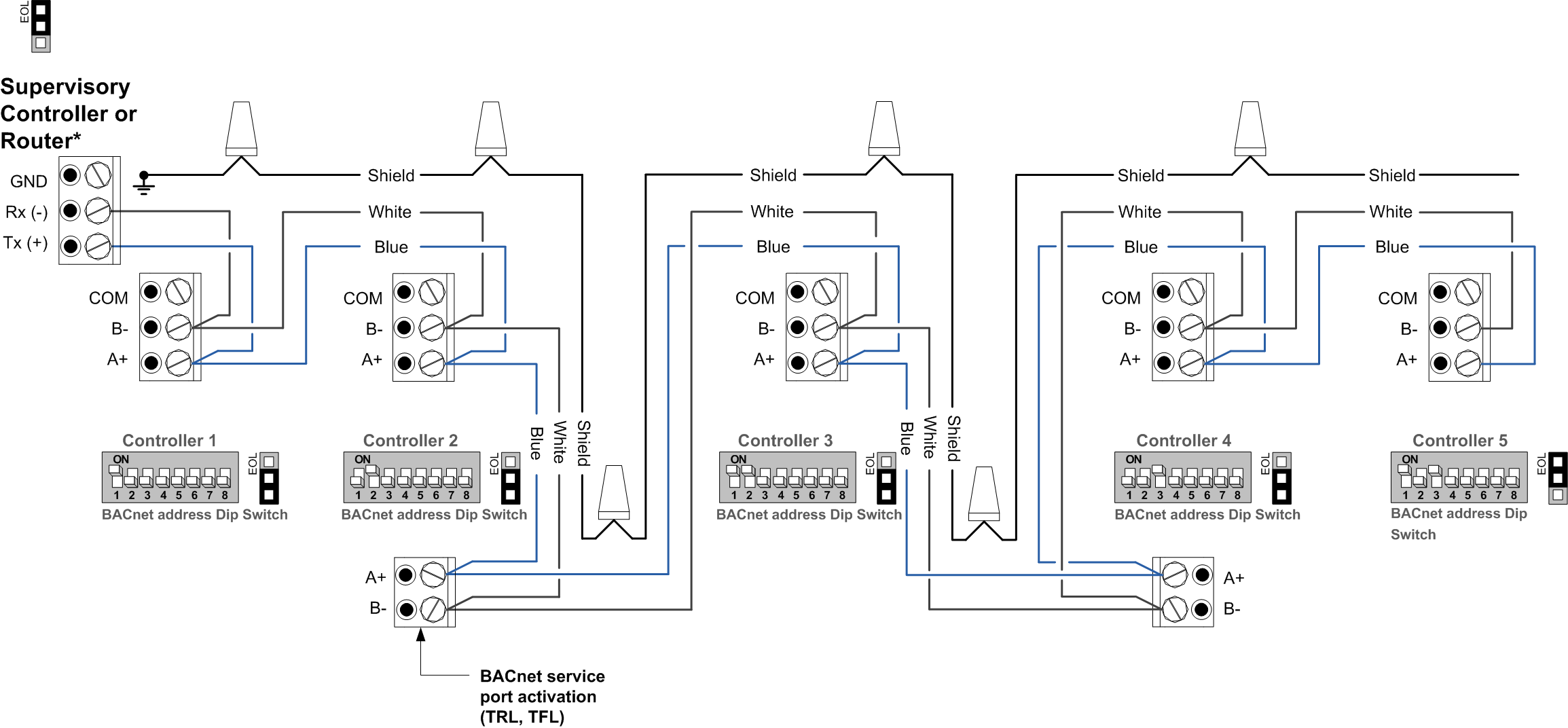
*Indicates non Neptronic devices or equipment.
Illustration 2 - MS/TP Network Correct Wiring
Here are some
additional tips for network wiring:
- Avoid unwinding the twists of the cable when not necessary. Twisting the insulated conductors around each other reduces outward noise and
improves immunity to external noise pickup.
- Avoid exposing too much bare wire so that adjacent wires do not short when connected to the controller.
- Twist the two A+ wires together before inserting them into the corresponding screw terminal of the controller.
- Avoid running network cables near DC signal switches, variable frequency drives and power lines (sources of electricity). These are the most
common sources of induced noise.
- Secure the network cables to reduce vibration as much as possible.
- Do not use T-taps (pig tails) on the network. Controllers may drop out of the token pass or packets may be lost. See illustration below for examples of T-taps.
Click here to enlarge the image
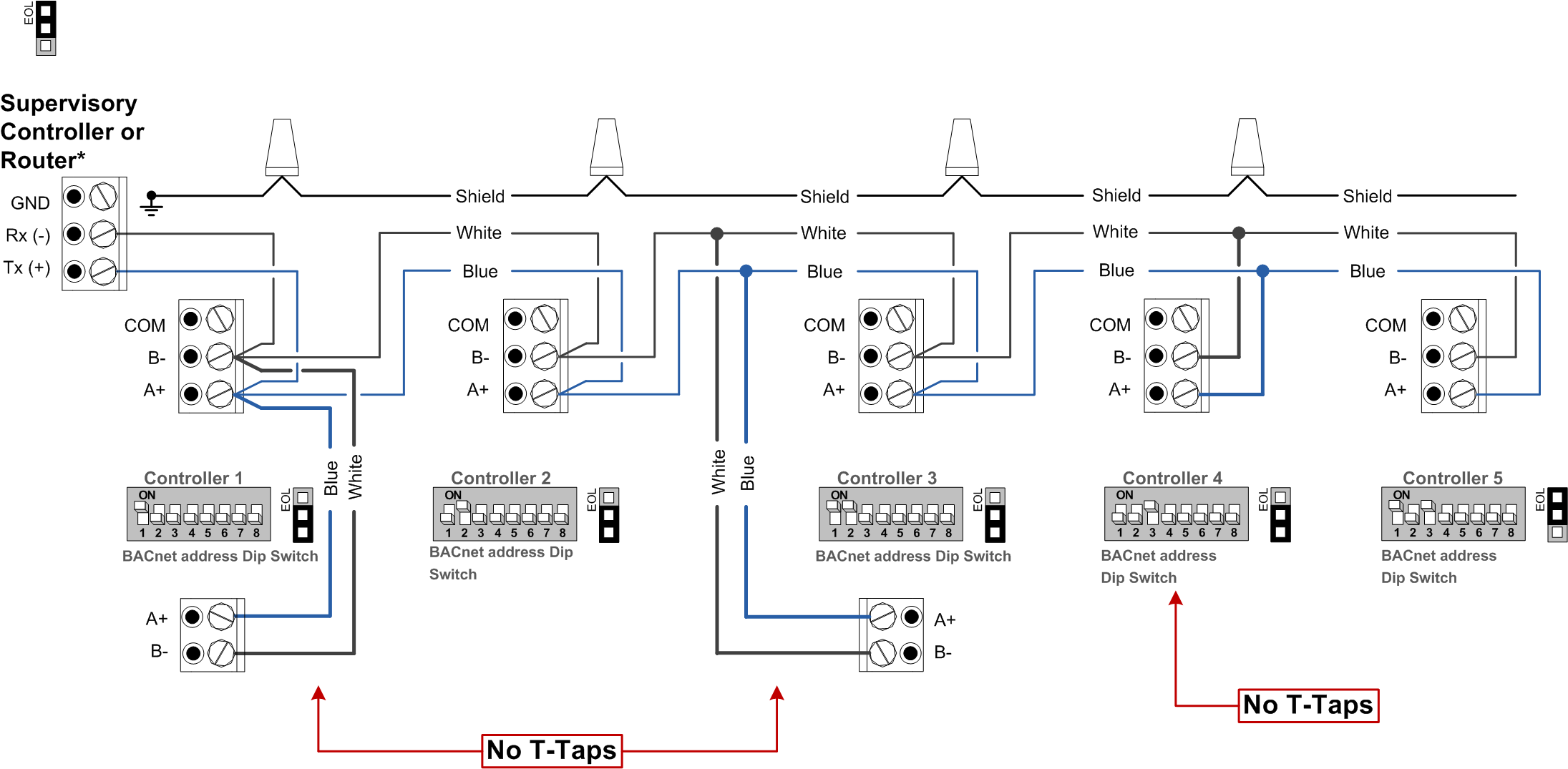
Illustration 3 - T-taps (pig tails)
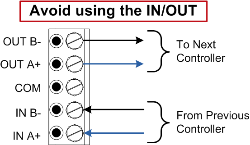
Illustration 4 - Communication In/Out

Network Cable Type
Neptronic recommends using low capacitance, EIA RS-485, 22 or 24 AWG shielded twisted pair cables such as Belden 9841 or equivalent. You should always verify the
Specification & Installation Instructions manual for the suggested cable type and size.
Maximum Network Length
BACnet MS/TP allows the total length of the twisted pair bus to be up to a maximum of 4,000 feet (1200 meters) using data rates from 9,825 to 100,000bps.
This condition is only valid when proper installation and cables are used. The maximum baud rate supported by the Neptronic BACnet controllers is 76,800bps.
If a network requires more than 4,000 feet (1,200 meters) in length, then repeaters must be used to extend the trunk length.
Shield Wiring Recommendations
Do not use the reference (COM) terminal on the controllers to wire the shields. Shields from each feed of the network connection to a controller should be wired
together. Special attention must be taken to ensure that the shields are well protected (ends tapped or covered) to prevent any connection to ground that could
influence the shield reference. This could create ground loops and change the reference level of the network. The shield in a daisy chain format is then
grounded at one end only (usually on the supervisory controller or router side). Do not ground the shield at more than one location as you may induce ground
loop noise.
Click here to enlarge the image
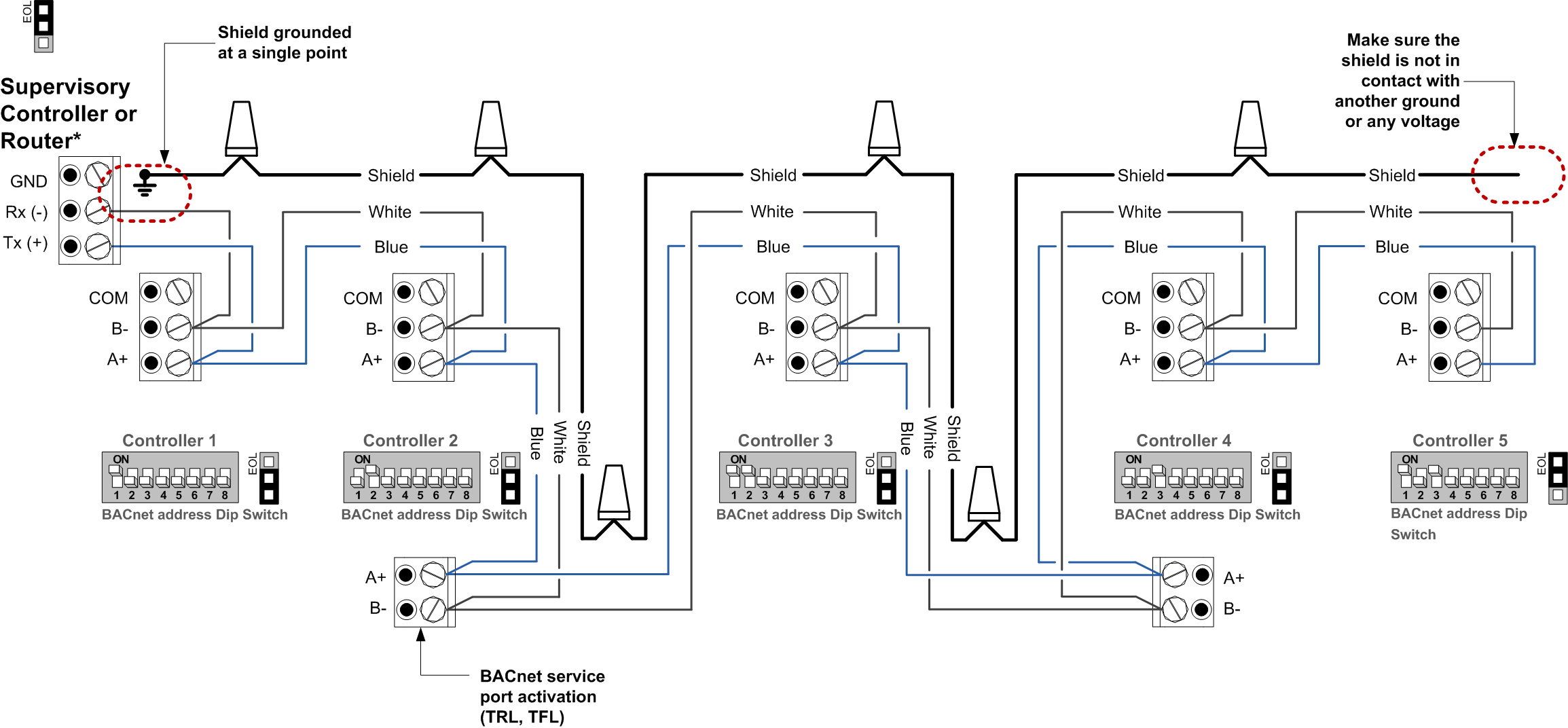
*Indicates non Neptronic devices or equipment.
Illustration 5 - MS/TP Network Correct Shield Wiring
Click here to enlarge the image
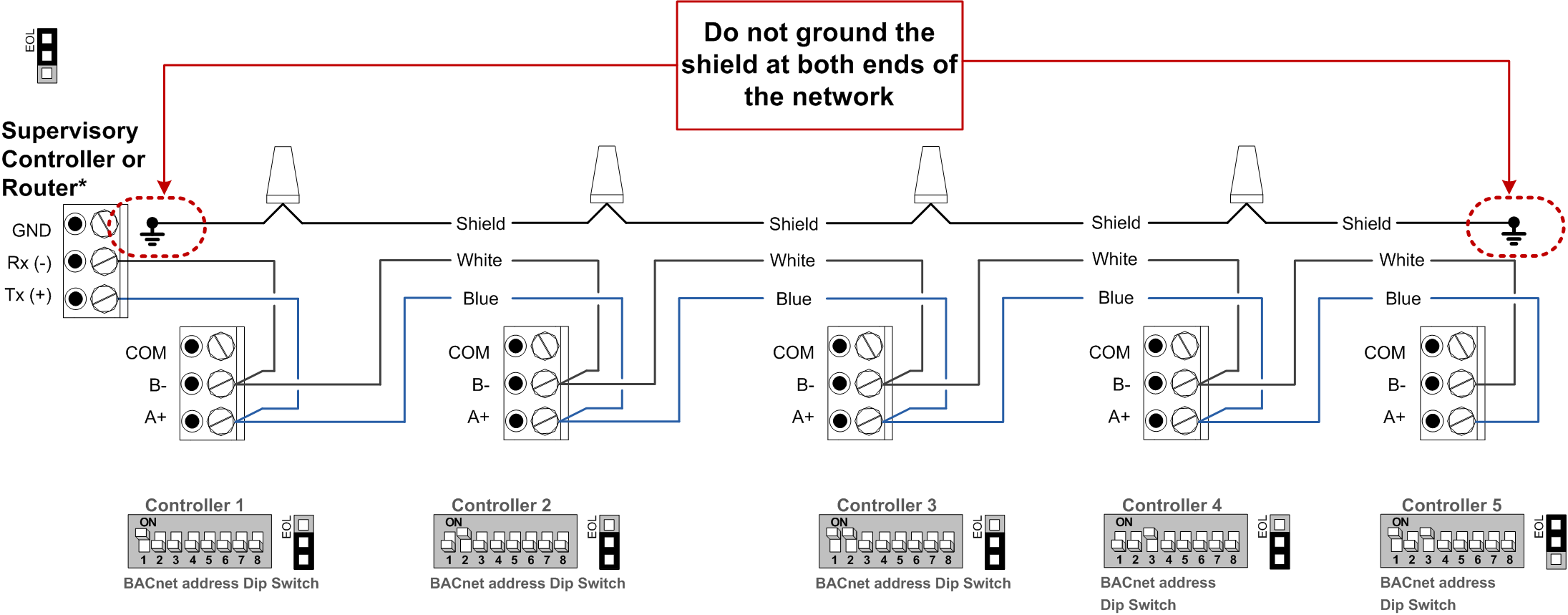
*Indicates non Neptronic devices or equipment.
Illustration 6 - MS/TP Network Incorrect Shield Wiring